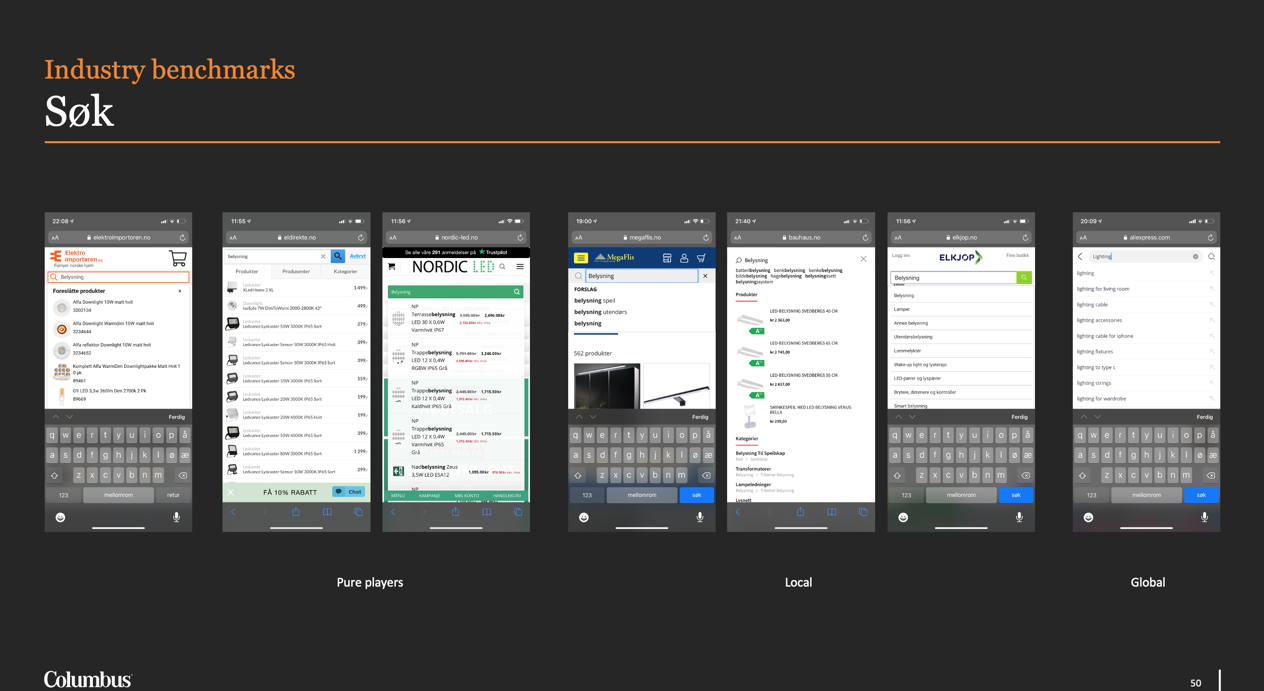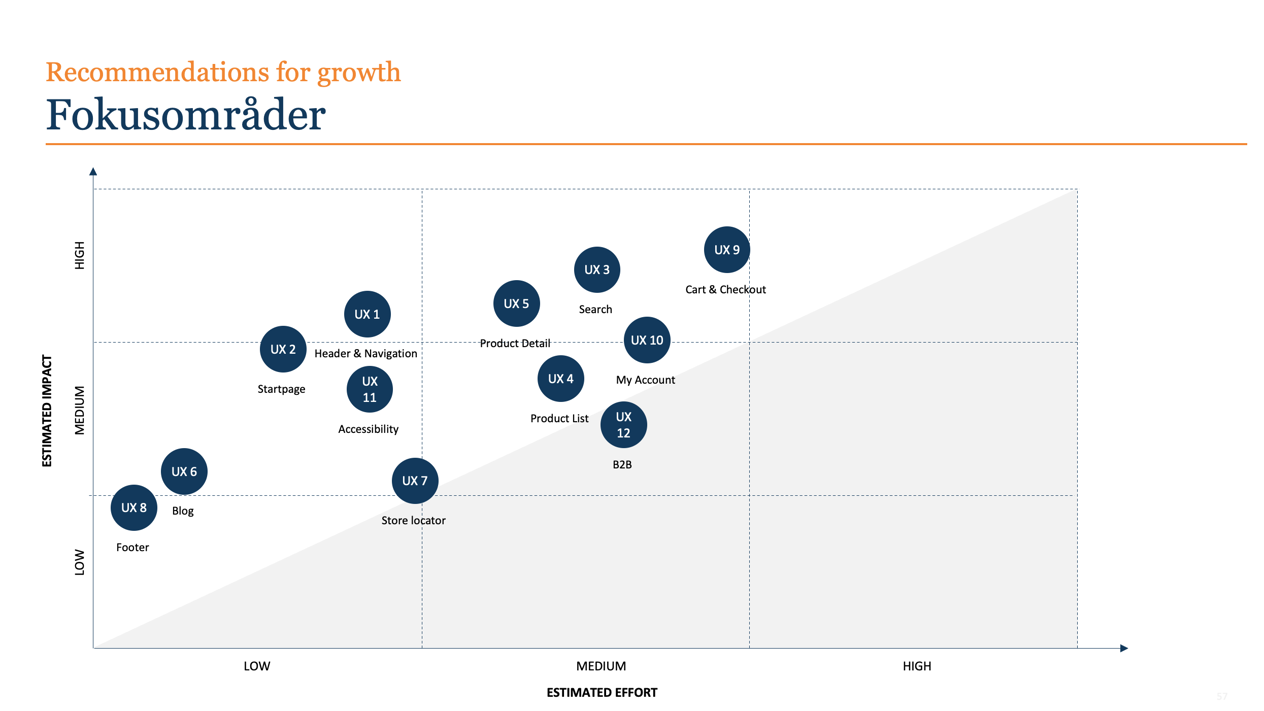Consumers have increasingly high expectations of the user experience offered by digital sales channels. Our health check allows businesses to guage the quality of those experiences and assess the user-friendliness of their e-commerce solutions.
Columbus has developed a tool called UX Audit which identifies specific improvements for the customer's solution, through thorough analysis, user testing, competitor comparison and the application of data from relevant research studies from the Baymard Institute and Google's Retail Playbook.

When and why should a UX Audit be carried out?
- If you suspect that unnecessary or incorrect functions have been developed
- It's unclear why you have low conversion rates
- There is a high bounce rate and drop-out among users
- There are inconsistent experiences across channels
- Customers are disloyal
- There are many customer service inquiries
What benefits can it bring?
- Improved customer experience
- Increased profitability
- A roadmap for the journey ahead, based on solid data instead of guesswork
- Comparison of your solution against competitors
- Increased customer understanding
What are you left with?
- Review of best practice within your industry
- Customer behaviour analyses
- Valuable insight from user testing
- Visual and functional comparison with competitors and industry leaders
- A priority list of improvements
Here's how we work
In order to arrive at optimum solutions, we focus on the following:
- Guidelines and best practices as a starting point
When performing a UX Audit, we won’t reinvent the wheel, but we are also not afraid to create innovative solutions. We evaluate how usability compares to best practice covering areas such as frameworks, navigation, product lists, product pages, accessibility, B2B commerce and much more.
We utilise data from UX specialists at the Baymard Institute, which conducts large-scale research studies into all aspects of digital user experiences, and Google's Retail Playbook, which is their comprehensive survey of e-commerce.

This external input, combined with our experience and expertise, has informed creation of the 244-checkpoint Columbus Commerce Best Practice, which is an important part of our process.
- Customer behaviour analysis
It is important to see things in a holistic perspective when analysing customer behaviour. We review quantitative and qualitative data through, for example, Google Analytics and the user analysis tool HotJar.
- User testing
To get qualitative feedback on customer behaviour, we also perform simple, low-budget user tests. We do this by taking the solution, preferably on a mobile device, out to where users are to explore whether the site is easy to navigate and to uncover any challenges users may experience.
- Benchmarking against competitors
In order to form a picture of the competitive landscape, we compare other players in the industry with the solution itself. We do this to gain a better understanding of what works well for the online store. We review feature areas such as on-site-search result pages, product list pages, product pages and landing pages to examine similarities and differences.

- List of improvements
After surveys, analyses and user tests, we collect and summarise our findings. We set this up in a diagram which visualises an estimate of how much effort it takes to implement changes against the impact they will produce. Based on the overall result and data, we can see which are most important to focus on.

We can facilitate and conduct UX Audit for all types of e-commerce solutions and industries. Do you want to know more about how you can use UX Audit as part of your solution?
Contact our Head of UX and Design, Øyvind Nordseth Westbye at: oyvind.nordseth.westbye@columbusglobal.com
